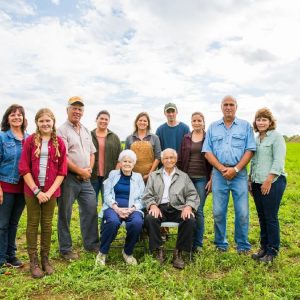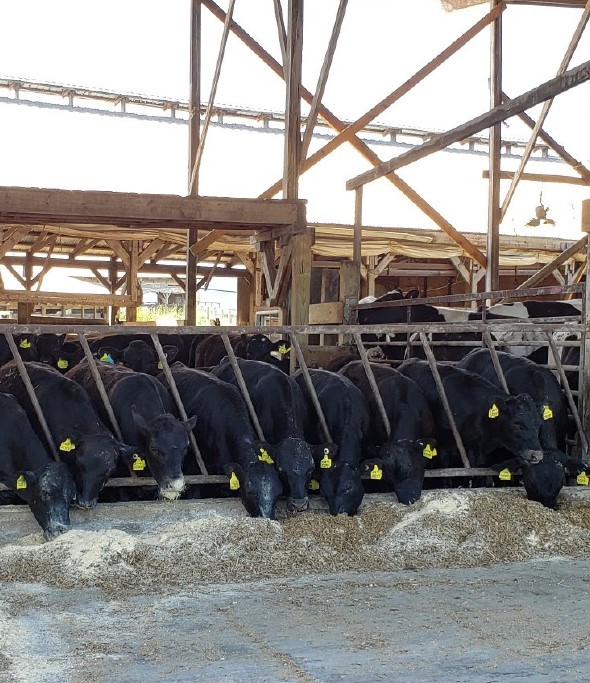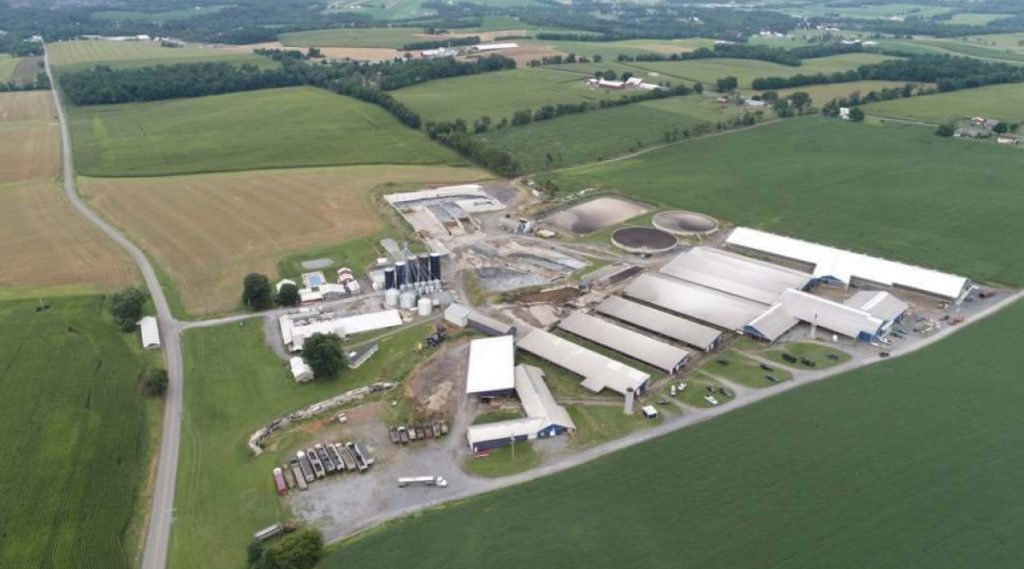
Candice Dotterer White Was Interviewed in the New Episode of “Cow-Side Conversations”
In the Center for Dairy Excellence’s latest episode of the “Cow-Side Conversations” podcast, Candice Dotterer White from Dotterer Dairy in Clinton County, Pennsylvania shared how they have diversified their dairy operation by raising and marketing their own beef. With 56 percent of farms having at least one female decision-maker involved, Candice also discussed being a woman in agriculture.
Candice opened the podcast by describing the size and scope of their operation. The Dotterer Dairy team milks 1,200 cows and farms approximately 3,300 acres. As they have diversified, they also do TMR custom sales and custom harvesting as well as selling beef. There are seven owners, and five of them, including Candice, are part of the family’s third generation.
“People will ask me, ‘How does it work having so many owners and managers?’ It actually works well because we kind of have our own lanes. We have weekly meetings to talk about what’s in our lane and what’s coming up,” she shared in the podcast. “We started having team meetings with a facilitator a few years ago, and she has really pushed us to start setting work, personal, three-year, and five-year goals. We’re finding out we need to diversify as much as possible and look at different ways to do that.”
Raising steers and adding beef into their breeding program has been one way they have diversified. Candice says the beef enterprise started out as a simple solution to a feed problem.
“I was getting very frustrated when the cows didn’t have any feed in front of them. I thought, can’t we feed them more? We decided to take 30 Holstein steers and raise them, so they could help eat the leftover feed,” she explained. “Then it just evolved over time as we worked with our veterinarian and Penn State Extension. We also worked with Premier Select Sires, and they helped me take the bottom quarter of the low-producing cows and breed them all to beef. We breed our higher producers to Holsteins.”
Candice first started with Angus and Wagyu cattle and recently started breeding some Charolais. As she feeds the dairy beef cross calves, she says they eat the weigh backs from the cows, top dressed with corn, as well as any grain that is leftover from the dairy calves. Candice says ensuring they get off to a strong and healthy start is also important to how she manages the program.
“We treat all of our beef just like we would our Holstein calves. They’re getting First Defense, they’re getting their naval dipped, and they’re getting high-quality colostrum in the first two hours of their life,” she said. “I feel like starting them out good makes a great finished product. They also tend to eat grain and milk more aggressively.”

The housing for the beef calves also allows Candice to utilize an empty facility, which has helped keep costs minimal for the beef enterprise. After transitioning the beef calves out of individual pens and into group housing, they eventually move to a specific barn they have designated for the beef group.
“It was fitting for us because we moved out of our old milking parlor in 2010. We have the old holding pen and bedded pack right by the parlor that was just kind of sitting empty, and we were looking for ways we could utilize the barn,” she added.
While Candice has found success integrating beef into their herd, she says it was a learning curve learning how to market it and sell it to her community. During the podcast, she described working with a financial advisor to ensure she was covering the cost of raising the animal and selecting a price point that would allow her to make a profit. Candice also worked with her local meat market to determine the processing fees, how much meat they could get into packages, and other factors that impacted how she marketed the beef.
“I really had to educate myself on beef to be able to educate other people. Once I started selling beef by the quarter, we were making $1,700-$1,800 on one. There’s a little more work on my part, but if I can make an extra $500 selling it to the public versus the sale barn where you would get $1,200 for a cull cow, I think I would rather do this,” she explained.

Integrating beef into the herd has not only helped solve the initial feed problem, but Candice says it has helped bring in additional revenue for their dairy.
“Our cows have not run out of feed since we have upped our weigh back percentage. It has definitely helped with our daily milk production as well and has helped bring in some revenue,” she explained. “It’s taking more of my time to sell the custom beef, but I’m really enjoying it. It has really opened my eyes to how much people don’t know about where their food comes from. I enjoy educating people and making a little extra money.”
As a woman in agriculture, Candice discussed how her family has always viewed everyone as equal but respected everyone’s individual interests and unique roles on the dairy operation. She plans to continue working with the team to find innovative ways to diversify their business.
“Growing up, my dad never treated us girls any differently. If a job needs to be done, it doesn’t matter if you’re a man or a woman. Get out there and get the job done. At the end of the day, we’re all one big team working together toward the same goal. If you have a good idea, bring it up,” she added. “I’m always thinking of how to be more efficient, how to be better, and how to innovate different things. I’m all about working smarter, not harder.”
To listen to the full podcast interview, visit www.centerfordairyexcellence.org/podcast. The podcast is also available on Spotify, Apple Podcasts, and Amazon Music. With a new episode released each month, Candice’s interview is the fifth episode in the second season. The podcast was designed to share real-time farmer insight, tricks of the trade, and inspiring stories from dairies across Pennsylvania.

